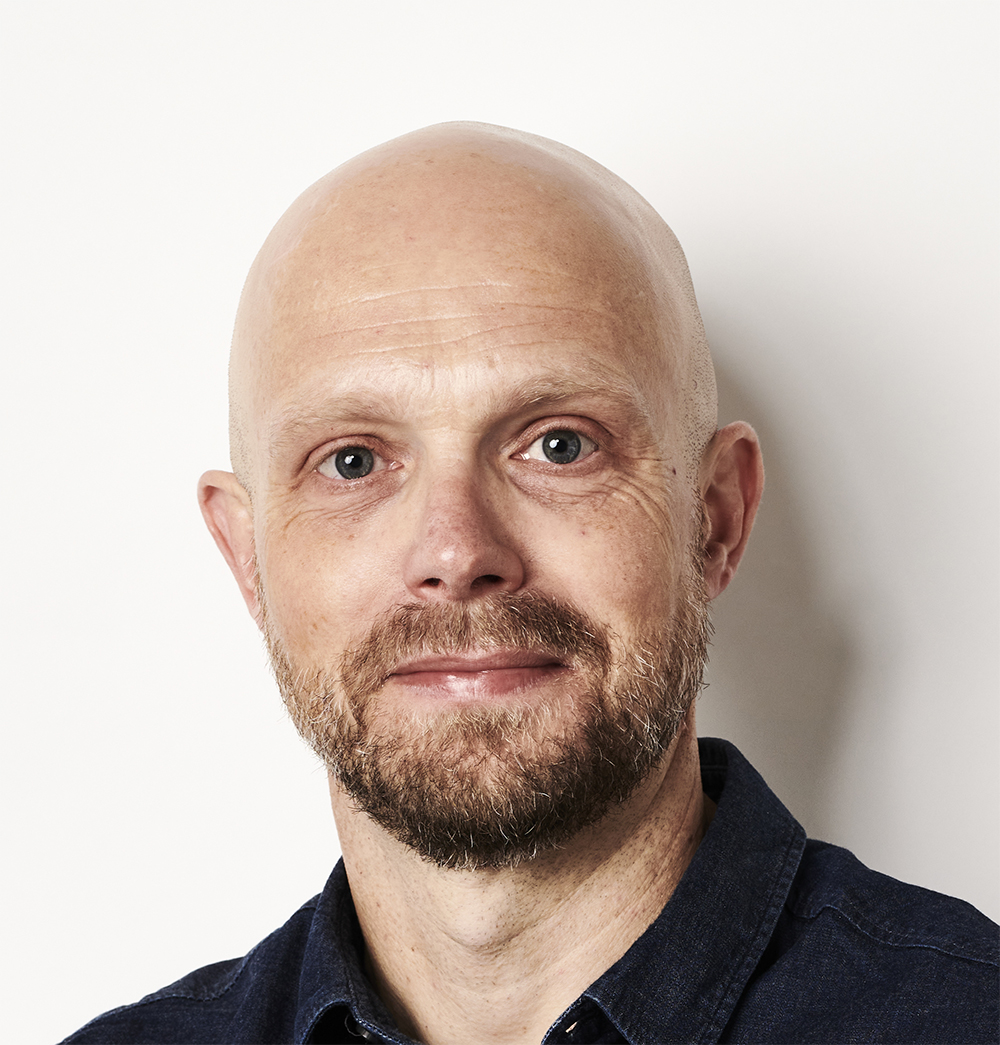In the magical frozen landscape of Swedish Lapland with our cameras and an experienced photography guide, I felt that this was the best opportunity I’d had so far to witness the aurora. I wasn’t wrong. Less than 10 minutes later, a misty grey-white tendril appeared in the night sky above the horizon. There they were – the Northern Lights!
Their defined ray shape changed slowly, bending, undulating and twirling until it took on an entirely different form from the diagonal line that had first appeared.
In next to no time it had morphed again, this time into a wave that was then joined by what looked like a forest fire burning green.
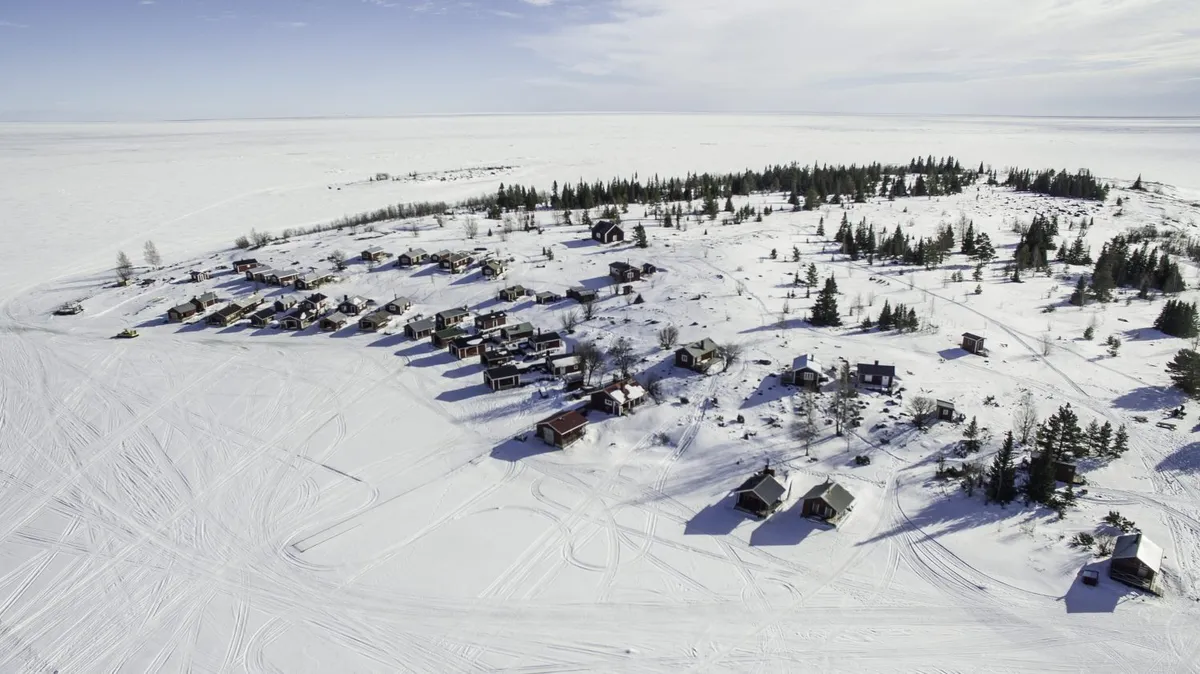
Aurora hunters know that to maximise your chances of seeing the Northern Lights you need to get as close to the Arctic Circle as possible.
High in the sky above this Arctic region, Earth’s magnetic field funnels charged particles streaming from the Sun along magnetic field lines, down into the atmosphere, creating the aurora spectacle in a ring centred on the magnetic north pole.
And here I was, in this auroral zone, close to the town of Kiruna in Swedish Lapland, hoping to have a ringside seat.
- How do you take photographs of the aurora?
- Gallery: beautiful images of the aurora
- Flying to the Northern Lights
I’d flown into northern Sweden from the UK a few days earlier and it was like stepping into a wonderland.
On the descent to Luleå, Swedish Lapland’s biggest city, we had passed over a wintery landscape of dark forest broken with patches of snowy white. It looked cold and enchanting.
Coming face to face with that cold for the first time was a shock: the temperature was -20°C, easily the coldest environment I’d experienced.
Not for the last time, I felt profoundly grateful for my decent thermals.
It wasn't long before my chance came to get immersed in the adventure of this high-altitude environment.
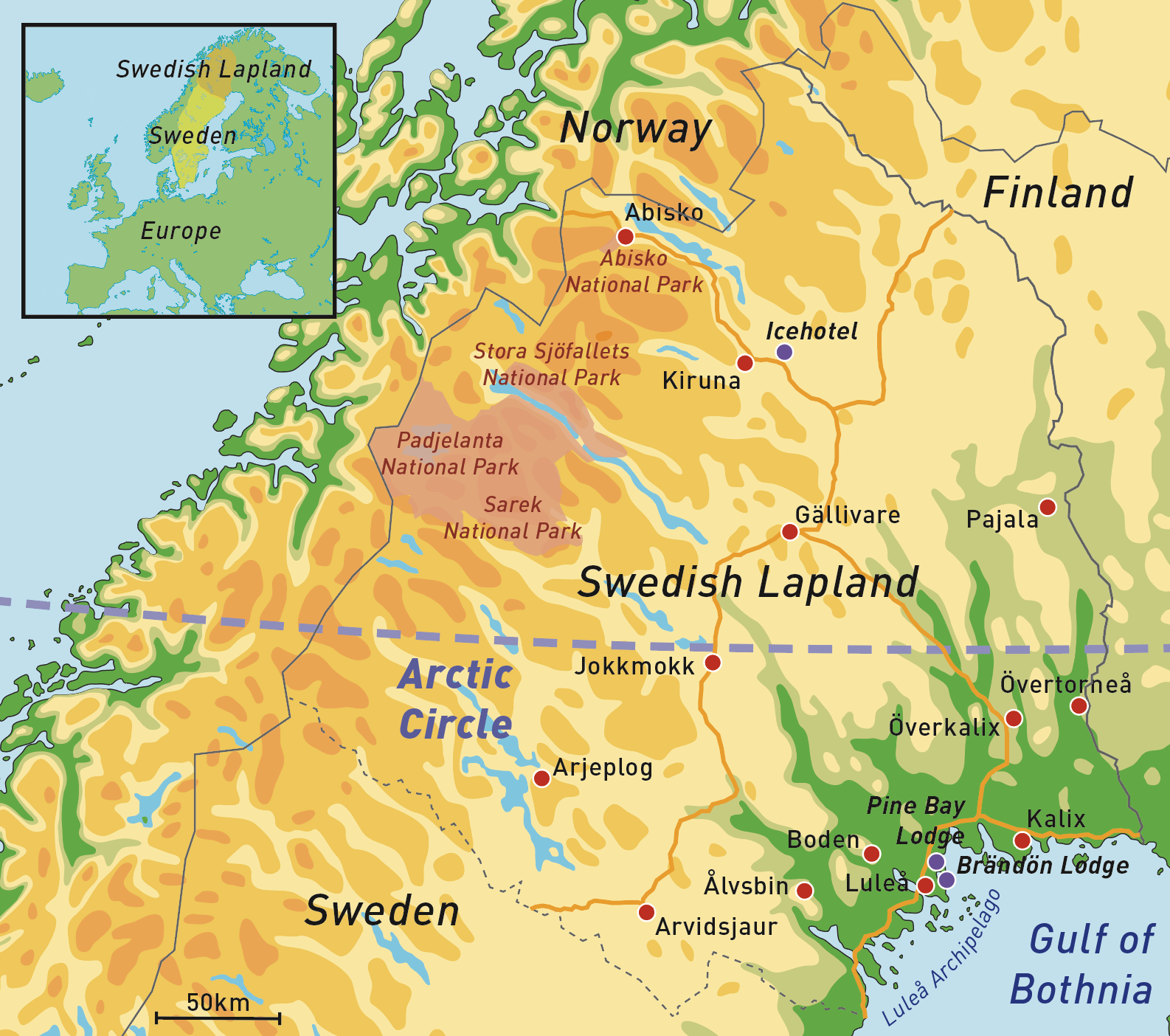
After dark, we were to be taken on a guided aurora hideaway dinner organised by the Pine Bay Lodge, a cosy, traditionally red-painted hotel half an hour’s drive north of Luleå.
On the frozen, snow-covered lake outside, a snowmobile and two wooden carriages were waiting.
It was going to be a short drive to our destination, and there were quilts to keep us warm on the way.
Off we sped, along the shoreline of the frozen lake, sheltered from the chilling wind beneath our quilts.
We passed prettily lit houses and white-robed trees until we were out in the Gulf of Bothnia, the open sea dotted with islands and a wide-open sky above.
Just in front of us in this otherworldly setting was a tiny shepherd’s hut circled with flickering lights.
Inside, a log burner kept it toasty and warm as we tucked into the meal cooked on the fire right outside.
Before night fell, a beautiful light descended: overhead it turned a deep azure blue, reflected by the snow-clad landscape; an all-round magical colour.
Cloud cover meant that there was no aurora to see that night, but as we returned across the spellbinding snowy landscape, a strange light effect appeared and disappeared at intervals – light pillars.
Stretching up into the sky, above the treeline, were vertical shafts of light created by distant car headlights reflecting off flat ice crystals hanging in the frozen air.
Settling down on the sofa next to the roaring fire in the Pine Bay Lodge’s lounge, there was a chance to reflect, and the evening had been no less magical without the Northern Lights.
Pine Bay Lodge and its sister hotel, Brändön Lodge, both run guided trips by day.
From Brändön Lodge, where accommodation is in cosy winter cabins set around a luxuriously appointed communal lodge, there are several ways to explore the frozen sea and islands of the Luleå archipelago: by hovercraft, dogsled, snowmobile or snowshoe.
Our two-hour snowmobile trip out among the islands was utterly exhilarating.
Following our guide, woodsman Tommy Holmberg, driving our own snowmobiles out on the flat, frozen expanse of sea ice, dressed in the insulated bodysuits, thick gloves, snow boots and helmets provided by the hotel, made it seem more like we were astronauts exploring an alien lunar landscape.
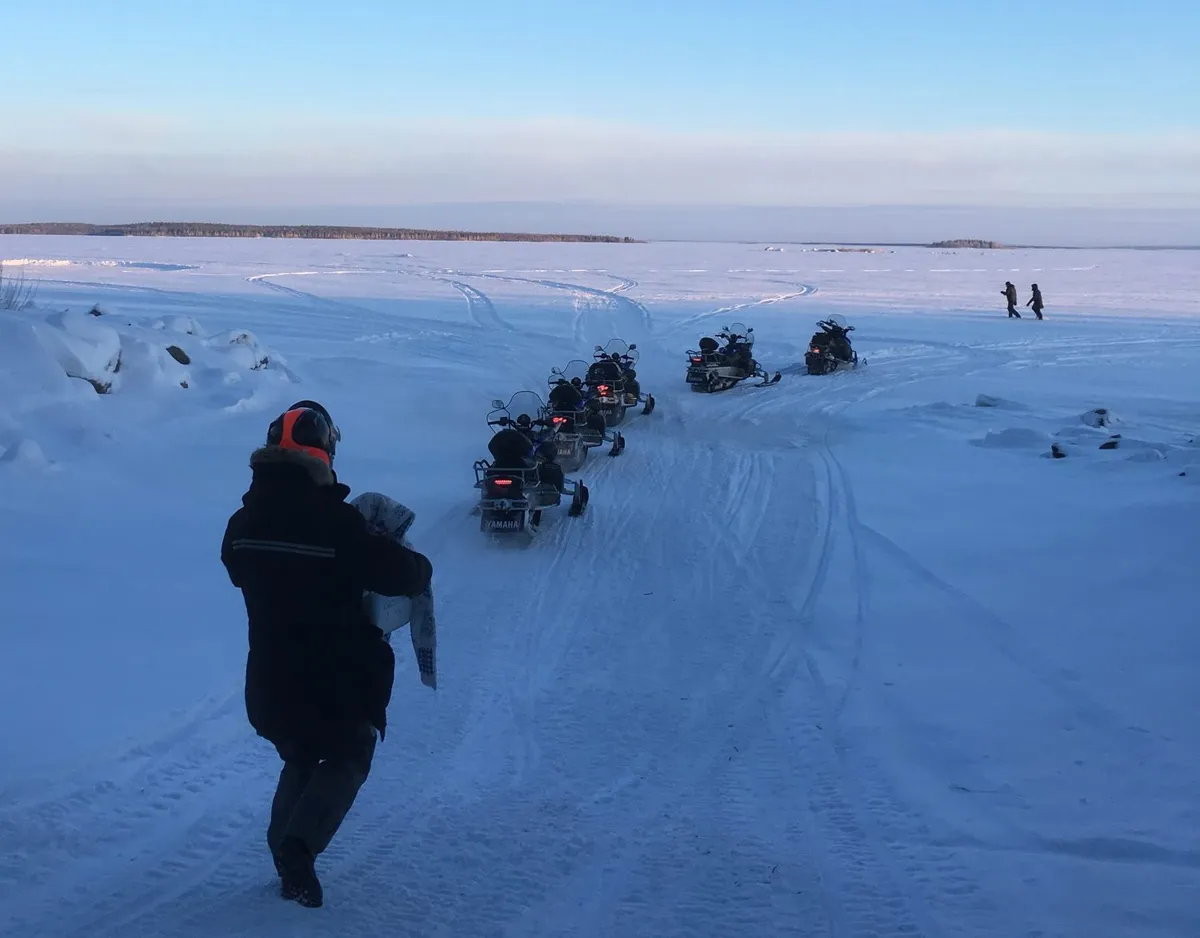
An altogether more Earth-like experience is dog sledding: there can be little doubt what planet you are on when your means of propulsion is a pack of 10 huskies!
Again, warm outerwear was available at the dog sledding centre and we pulled on the bodysuits and extra gloves quickly so we could help get the dogs in their harnesses.
The sled ride itself was a revelation. After all the howling and panting (the dogs, not us) and the excitement of preparing to leave, once we were away and the sled was gliding gracefully through the trees, a serene peace set in.
Intent on stretching their legs and pulling the sled, the only sound to come from the husky pack now was panting.
The sky was clear and, as it was around 3pm, it began to get dark.
Before night fell, a beautiful light descended: overhead it turned a deep azure blue, which was reflected by the snow-clad landscape; a truly all-round magical colour.
Between the trees, glimpses of the Moon hanging low to the horizon completed this utterly beguiling experience.
Still, it was no less welcoming to get into the warmth of the traditional hut at the dog sledding centre and sit with a coffee by the fire.
After the adventure of sledding, this Swedish tradition of ‘fika’ – taking time to relax and warm up over a hot drink and a pastry – was very welcome.
It also served to make the news much more bearable that cloud cover again meant it was unlikely that we'd see the aurora for another night.
The absence of the Northern Lights did however make it possible to experience the city of Luleå free from guilt at missing out on a display.
Situated on the edge of the Gulf of Bothnia, it was a welcome surprise to experience sophisticated urban living so close to the wild, forested interior and the otherworldly, almost lunar landscape of the frozen sea ice.

The city is rightly proud of its restaurants, several of which have made it into Scandinavia’s top dining handbook, The White Guide.
The food here is world-class, the gifted chefs using local ingredients to full effect.
Highlights include the reindeer tartare, almond crisps and pomegranate pips dusted with chanterelle mushrooms and juniper at Bistro Norrland; a mixed grill of reindeer, moose, wild boar and red deer with celeriac and baked apple puree and shiitake jus at CG’s; and a cloudberry sorbet with vanilla ice cream, white chocolate and oat crisp at Hemma Gastronome.
Savouring the tart and sweet flavour of the cloudberry, a raspberry-shaped yellow berry found only in cold climates, I marvelled at the quality of food available at temperatures 20ºbelow freezing.
The next morning it was time to say goodbye to Luleå and head north to Kiruna.
It’s possible to make this four-hour journey into the Arctic on the train, but we drove, giving the opportunity to stop at the Arctic Circle.
It’s a dramatic route, with stunning scenery, and on a clear winter’s day, the low Sun lends a beautiful pink light and long shadows to the forested hilltops and wide river valleys.
The route was well cleared of snow and traffic was light, but even so, driving in such low temperatures takes care, attention and a set of winter tyres with metal studs to provide extra grip.
Reindeer are a common sight and drivers must be ready to stop for any crossing the road.
To alert drivers to roaming herds, the local Sami people who own the animals fix black bin liners to the posts that line the main roads.
Two hours into the journey, we reached the Arctic Circle, the great line of latitude marked by a large sign and an impressive information display.
It explained that at the winter solstice the Arctic Circle represents the northernmost point at which the Sun is just visible at midday.

Further north from here was the land where the Sun stayed below the horizon for weeks in midwinter.
The Sun was just setting when we reached our destination two hours later, the Icehotel.
This unique resort, a short distance outside Kiruna, is centred on two hotels constructed entirely from the snow and ice taken from the Torne River next to which they sit.
One of the buildings is seasonal and in spring melts back into the river.
The other is year-round, built in a stone and earth shell to preserve the cold in the warmer seasons.
The whole place has a pristine feeling. Perhaps it’s the exceptionally clear block of river ice all around it.
Inside both hotels, the rooms are kept at a constant -5°C, and with temperatures outside being 15° lower than that, it felt positively warm walking through the doors.
On this visit, one room was carved to look like an underwater aquarium, complete with friendly sharks and a shoal of fish.
In the tall, church-like structure there’s a soothing quiet, the snow and ice walls cutting out sounds very effectively.
It’s not just the ice that makes this a special place to sleep, the Icehotel’s rooms are themselves works of art: each is a distinctive ice sculpture, a theatre set with a bed.
During the day the rooms are open to all guests to visit, so those who choose warm accommodation in chalets can take them in too.
It is enchanting to walk through this frozen art gallery, taking in the different works.
Each year, different artists are invited to decorate a room. On this visit, one room was carved to look like an underwater aquarium, complete with friendly sharks and a shoal of fish.
Another had the bed on a pontoon over what appeared to be cracked ice below.
And one was sculpted to look like a Victorian library, complete with book-lined shelves and armchairs hewn from ice.
It was truly impressive to see what can be done with frozen water, a chainsaw and chisels.
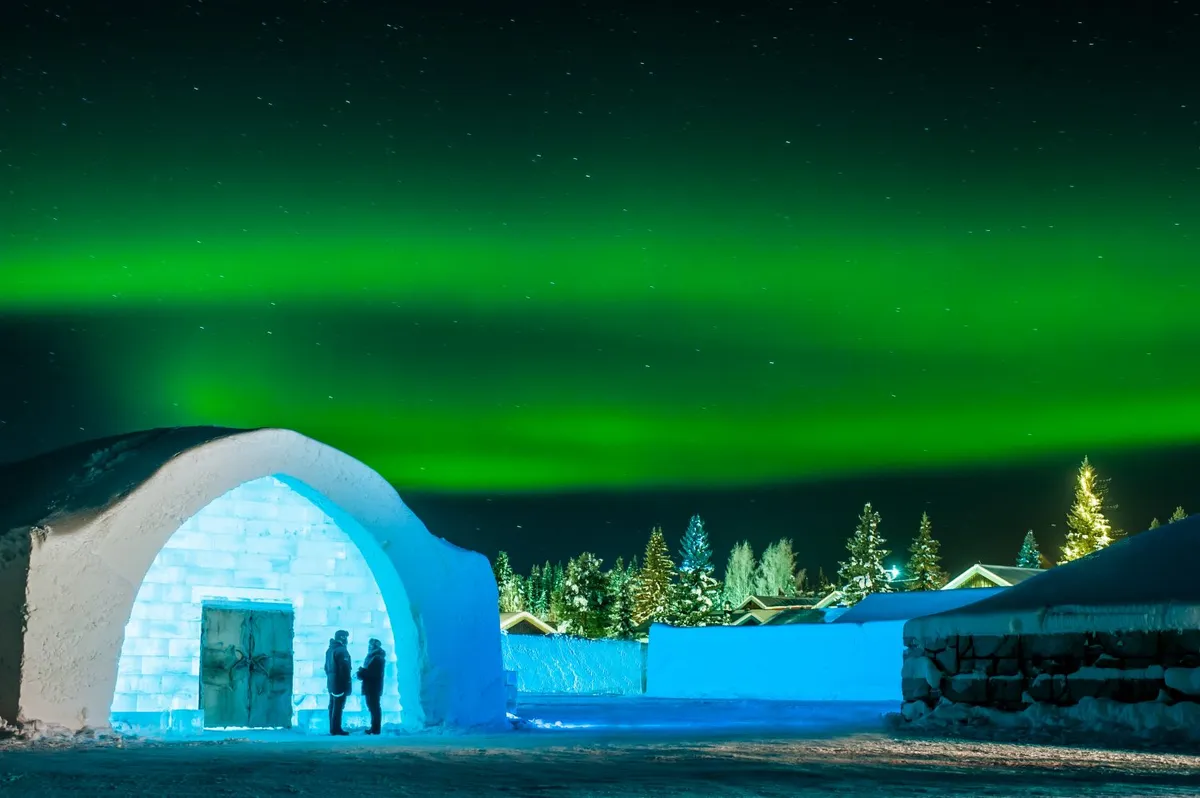
By now our final night in the aurora zone had arrived and, after an exceptional meal in the Icehotel’s warm, fine dining restaurant, it was time to don the winter layers provided by the hotel for our guided aurora hunt.
We were met in the lobby area by our guide from aurora tour experts Lights over Lapland, senior photographer Chris Hodgson.
All our photography equipment was provided and we were taken carefully through how to set up the tripod, how to adjust the capture settings on the DSLR cameras, and how to frame and manually focus the shots in the dark.
Once we were all comfortable with the camera controls, we jumped in the minibus and headed out to a local spot known for its clear horizons.
The forecast was for a clear night and excitement was high as we reached our destination.
A quick glance up confirmed it: the stars were out!
We set up our tripods and cameras in the snow a short distance from a roaring camp fire and waited.
Just a short time later, an aurora display developed that put the cherry on the cake of this adventurous Swedish trip.
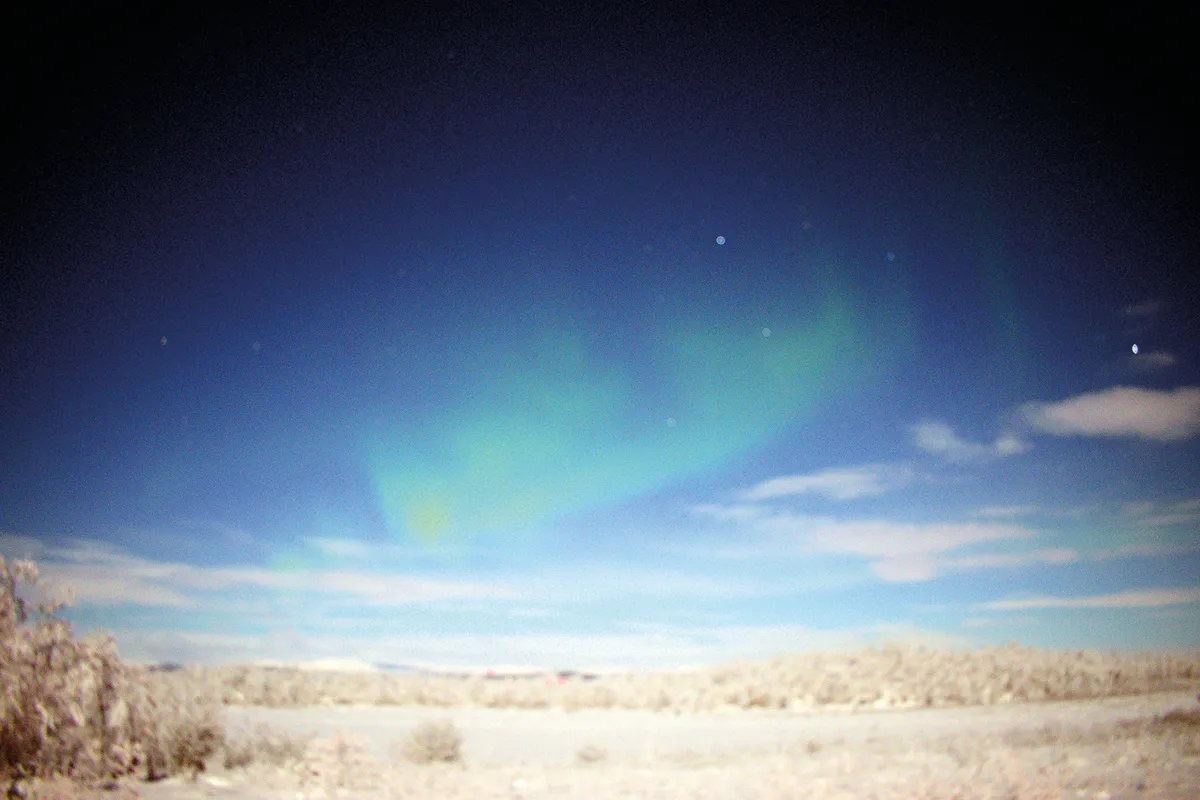
We clicked away, our guide Chris on hand to help with focusing or adjusting the settings to best capture the shifting levels of light.
It was a captivating way to capture the aurora, the deep blue sky patterned with tendrils of faint green above, white snow-covered landscape below, and the yellow glow of a camp fire off in the distance.
This article originally appeared in the March 2019 issue of BBC Sky at Night Magazine. Editor Chris Bramley travelled to Sweden with Visit Lapland and Swedish Lapland.
